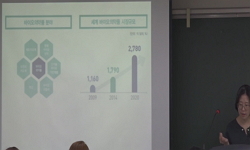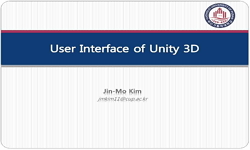본 논문은 개인 사용자의 트윗을 분석하여 사용자의 감정 흐름을 모니터링할 수 있는 새로운 방법을 제안한다. 본 논문에서는 사용자의 감성 흐름을 정확하게 예측하기 위해서 기존의 텍스...
http://chineseinput.net/에서 pinyin(병음)방식으로 중국어를 변환할 수 있습니다.
변환된 중국어를 복사하여 사용하시면 됩니다.
- 中文 을 입력하시려면 zhongwen을 입력하시고 space를누르시면됩니다.
- 北京 을 입력하시려면 beijing을 입력하시고 space를 누르시면 됩니다.
https://www.riss.kr/link?id=A105087302
- 저자
- 발행기관
- 학술지명
- 권호사항
-
발행연도
2018
-
작성언어
Korean
- 주제어
-
등재정보
KCI등재
-
자료형태
학술저널
-
수록면
419-431(13쪽)
-
KCI 피인용횟수
4
- DOI식별코드
- 제공처
-
0
상세조회 -
0
다운로드
부가정보
국문 초록 (Abstract)
본 논문은 개인 사용자의 트윗을 분석하여 사용자의 감정 흐름을 모니터링할 수 있는 새로운 방법을 제안한다. 본 논문에서는 사용자의 감성 흐름을 정확하게 예측하기 위해서 기존의 텍스트 위주의 시스템과 달리 본 연구에서는 사용자가 쓴 텍스트와 영상 등으로부터 감성을 인식하는 멀티 모달 분석 기법이 개발된다. 제안된 방법에서는 먼저 어휘분석 및 문맥을 이용한 텍스트분석기와 학습기반의 영상감성인식기를 이용하여 텍스트 및 영상 트윗에 숨겨진 개별 감성을 추출한다. 이후 이들은 규칙기반 통합 방법에 의해 날짜별로 통합되고, 마지막으로 개인의 감성흐름을 보다 직관적으로 관측할 수 있도록 감성흐름그래프로 시각화한다. 제안된 방법의 효용성을 평가하기 위해 두 단계의 실험이 수행되었다. 먼저 4만여 개의 트윗으로부터 제안된 방법의 정확도 평가 실험이 수행되고, 최신 트윗 분석 기술과 비교 분석되었다. 두 번째 실험에서는 40명의 우울증을 가진 사용자와 일반사용자를 구분할 수 있는지에 대한 실험이 수행된 결과, 제안된 기술이 실제 사용자의 감성흐름을 모니터하는데 효율적임을 증명하였다.
다국어 초록 (Multilingual Abstract)
In this paper, we propose a novel method for monitoring mood trend of Twitter users by analyzing their daily tweets for a long period. Then, to more accurately understand their tweets, we analyze all types of content in tweets, i.e., texts and emotico...
In this paper, we propose a novel method for monitoring mood trend of Twitter users by analyzing their daily tweets for a long period. Then, to more accurately understand their tweets, we analyze all types of content in tweets, i.e., texts and emoticons, and images, thus develop a multimodal sentiment analysis method. In the proposed method, two single-modal analyses first are performed to extract the users’ moods hidden in texts and images: a lexicon-based and learning-based text classifier and a learning-based image classifier. Thereafter, the extracted moods from the respective analyses are combined into a tweet mood and aggregated a daily mood. As a result, the proposed method generates a user daily mood flow graph, which allows us for monitoring the mood trend of users more intuitively. For evaluation, we perform two sets of experiment. First, we collect the data sets of 40,447 data. We evaluate our method via comparing the state-of-the-art techniques. In our experiments, we demonstrate that the proposed multimodal analysis method outperforms other baselines and our own methods using text-based tweets or images only. Furthermore, to evaluate the potential of the proposed method in monitoring users’ mood trend, we tested the proposed method with 40 depressive users and 40 normal users. It proves that the proposed method can be effectively used in finding depressed users.
목차 (Table of Contents)
- 요약
- Abstract
- 1. 서론
- 2. 관련연구
- 3. 제안된 시스템의 개요
- 요약
- Abstract
- 1. 서론
- 2. 관련연구
- 3. 제안된 시스템의 개요
- 4. 문장의 어휘와 문맥 기반의 텍스트 분석
- 4.1 개별 문장으로 부터의 특징 추출
- 4.2 이모티콘 분석
- 4.3 감성 분류
- 5. 이미지 기반 감성 분석
- 5.1 특징 추출
- 5.2 감성 인식
- 6. 통합 (Aggregation)
- 7. 실험 결과
- 7.1 멀티모달 감성 분석의 정확도 평가
- 7.2 사용자 감성 흐름 모니터링 결과 분석
- 8. 결론
- REFERENCES
참고문헌 (Reference)
1 "Wikipedia"
2 C. Xu, "Visual sentiment prediction with deep convolutional neural networks"
3 H. Lin, "User-level psychological stress detection from social media using deep neural network" 507-516, 2014
4 Y. Yang, "User interest and social influence based emotion prediction for individuals" 785-788, 2013
5 A. Mogadala, "Twitter user behavior understanding with mood transition prediction" 31-34, 2012
6 A. Go, "Twitter sentiment analysis"
7 J. Bollen, "Twitter mood predicts the stock market" 2 : 1-8, 2010
8 Y. R. Tausczik, "The psychological meaning of words : LIWC and computerized text analysis methods" 29 : 24-54, 2010
9 H. Sueki, "The association of suicide-related Twitter use with suicidal behaviour : A cross-sectional study of young internet users in Japan" 170 : 155-160, 2015
10 E. S. Dan-Glauser, "The Geneva affective picture database(GAPED) : a new 730-picture database focusing on valence and normative significance" 43 : 468-477, 2011
1 "Wikipedia"
2 C. Xu, "Visual sentiment prediction with deep convolutional neural networks"
3 H. Lin, "User-level psychological stress detection from social media using deep neural network" 507-516, 2014
4 Y. Yang, "User interest and social influence based emotion prediction for individuals" 785-788, 2013
5 A. Mogadala, "Twitter user behavior understanding with mood transition prediction" 31-34, 2012
6 A. Go, "Twitter sentiment analysis"
7 J. Bollen, "Twitter mood predicts the stock market" 2 : 1-8, 2010
8 Y. R. Tausczik, "The psychological meaning of words : LIWC and computerized text analysis methods" 29 : 24-54, 2010
9 H. Sueki, "The association of suicide-related Twitter use with suicidal behaviour : A cross-sectional study of young internet users in Japan" 170 : 155-160, 2015
10 E. S. Dan-Glauser, "The Geneva affective picture database(GAPED) : a new 730-picture database focusing on valence and normative significance" 43 : 468-477, 2011
11 L. S. Radloff L S, "The CES-D scale a self-report depression scale for research in the general population" 1 : 385-401, 1977
12 C.K. Chung, "Social Conition and Communication" Psychology Press 25-42, 2014
13 "Sentistrength"
14 M. Thelwall, "Sentiment strength detection in short informal text" 61 : 2544-2558, 2010
15 D. Borth, "Sentibank : large-scale ontology and classifiers for detecting sentiment and emotions in visual content" 459-460, 2013
16 Q. You, "Robust image sentiment analysis using progressively trained and domain transferred deep networks" 381-388, 2015
17 S. Tsugawa, "Recognizing depression from Twitter activity" 3187-3196, 2015
18 S. Tsugawa, "Recognizing depression from Twitter activity" 3187-3196, 2015
19 M. De Chounhury, "Predicting postpartum changes in emotion and behavior via social media" 3267-3276, 2013
20 M. De Choudhury, "Predicting depression via social media" 1-10, 2013
21 "Photo. Net"
22 G. E. Simon, "Outcomes of recognized and unrecognized depression in an international primary care study" 21 : 97-105, 1999
23 J. Yuan, "Multimedia Data Mining and Analytics" Springer International Publishing 31-59, 2015
24 A. Hogenboom, "Exploiting emoticons in sentiment analysis" 703-710, 2013
25 M. Marcus, "Depression : A global public health concern" WHO 6-8, 2012
26 S. M. Mohammad, "Crowdsourcing a word–emotion association lexicon" 29 : 436-465, 2013
27 G. Katz, "ConSent : Context-based sentiment analysis" 84 : 162-178, 2015
28 L. Zhang, "Combining Lexicon-based and Learning-based Methods for Twitter Sentiment Analysis" HP 2011
29 J. Jia, "Can we understand van Gogh's mood? : Learning to infer affects from images in social networks" 857-860, 2012
30 Z. Rihmer, "Can better recognition and treatment of depression reduce suicide rates? A brief review" 16 : 406-409, 2001
31 S. Kobayashi, "COLOR IMAGE SCALE" Kodansha 1991
32 S. Zhao, "Affective image retrieval via multi-graph learning" 1025-1028, 2014
33 S. Park, "Activities on Facebook reveal the depressive state of users" 15 : 2013
동일학술지(권/호) 다른 논문
-
토트백의 무게가 젊은 성인여성의 상부 체간근육의 근두께와 근긴장도에 미치는 영향에 관한 융합연구
- 한국융합학회
- 조규동
- 2018
- KCI등재
-
- 한국융합학회
- 김정이
- 2018
- KCI등재
-
융합을 활용한 남북한 장애인스포츠 교류 활성화 방안 : 운동재활 복지정책을 중심으로
- 한국융합학회
- 이창희
- 2018
- KCI등재
-
결혼 책임주의와 싱가포르 Social Development Network의 역할과 위상
- 한국융합학회
- 김명희
- 2018
- KCI등재
분석정보
인용정보 인용지수 설명보기
학술지 이력
| 연월일 | 이력구분 | 이력상세 | 등재구분 |
|---|---|---|---|
| 2025 | 평가예정 | 신규평가 신청대상 (신규평가) | |
| 2022-06-01 | 평가 | 등재학술지 취소 | |
| 2019-01-01 | 평가 | 등재학술지 유지 (계속평가) |  |
| 2016-01-01 | 평가 | 등재학술지 선정 (계속평가) |  |
| 2014-01-01 | 평가 | 등재후보학술지 선정 (신규평가) |  |
학술지 인용정보
| 기준연도 | WOS-KCI 통합IF(2년) | KCIF(2년) | KCIF(3년) |
|---|---|---|---|
| 2016 | 5.85 | 5.85 | 0 |
| KCIF(4년) | KCIF(5년) | 중심성지수(3년) | 즉시성지수 |
| 0 | 0 | 0 | 0.76 |





 ScienceON
ScienceON eArticle
eArticle






